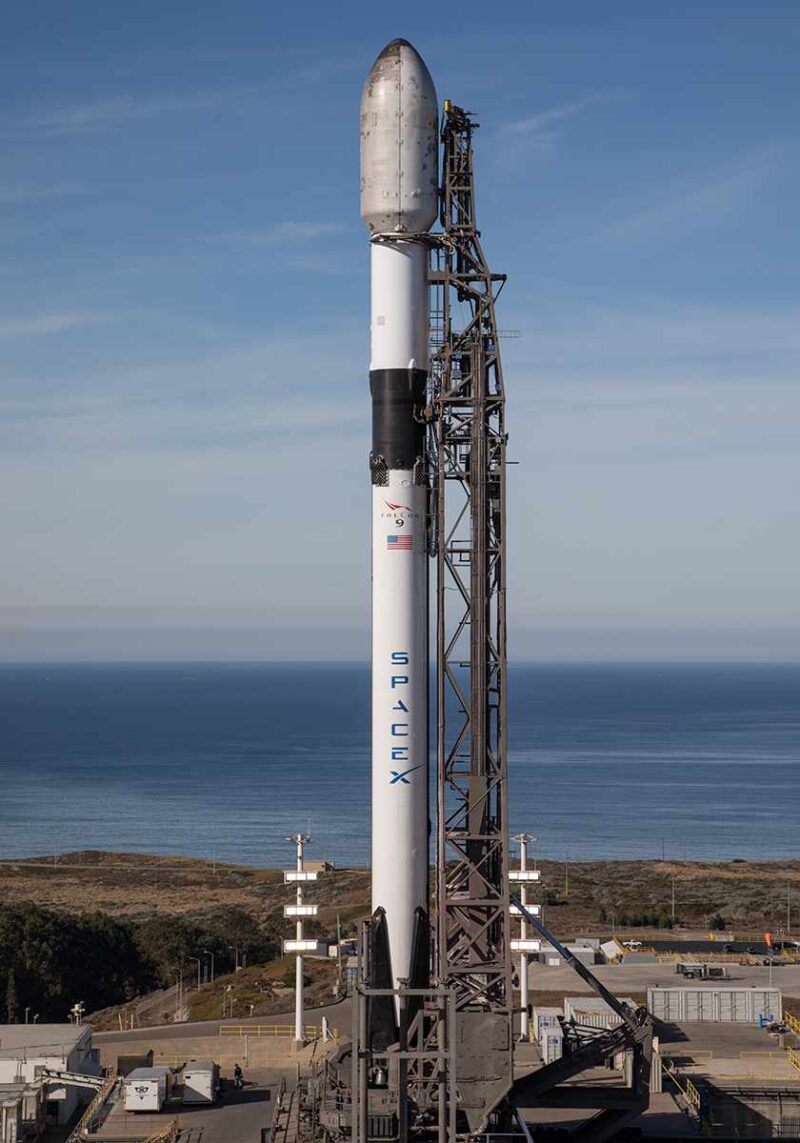
After a launchless week, and more than 90 missions undertaken so far this year, SpaceX is targeting late Friday for its third Falcon 9 flight of December from Vandenberg Space Force Base, Calif. The never-before-used B1082 core—which becomes the fifth brand-new single-stick booster to enter the fleet in 2023—is set to rise from mountain-ringed Space Launch Complex (SLC)-4E during a group of T-0 points, the first opening at 9:19 p.m. PST Friday and the last closing at 12:37 a.m. PST Saturday.
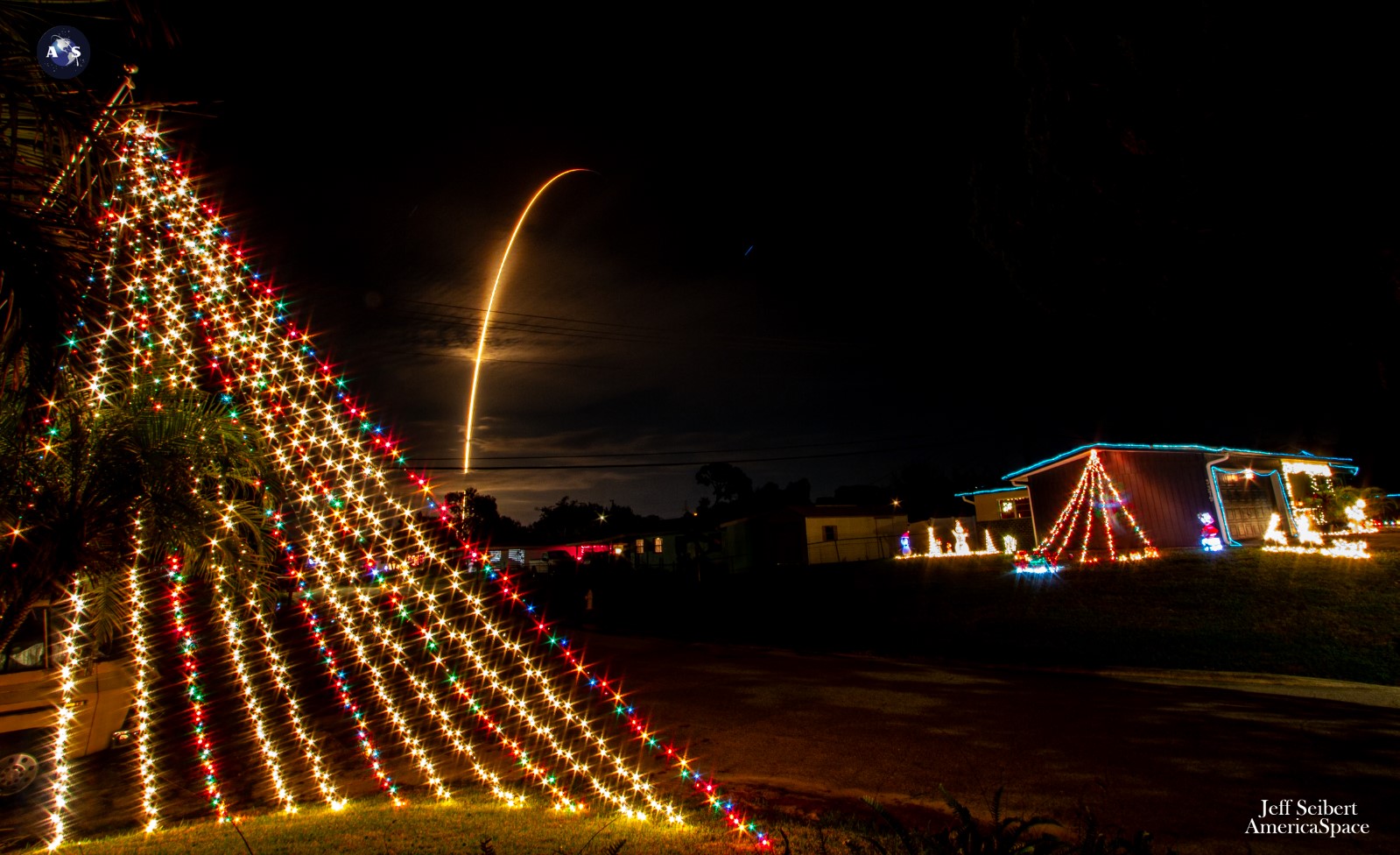
A successful launch tonight will see the West Coast launch base overtake Florida for the greatest number of missions so far in December, following a spate of unfavorable weather having forced repeat postponements of another Falcon 9 and a triple-barreled Falcon Heavy, laden with the X-37B mini-shuttle for the Space Force’s USSF-52 mission. Four launches—two from Florida, two from Vandenberg—took place in the month’s first seven days, lofting three batches of Starlink low-orbiting internet communications satellites, as well as South Korea’s Project 425 Synthetic Aperture Radar (SAR) military payload.
Tonight’s hoped-for third Vandenberg flight of December will push the West Coast just ahead of the East in terms of launch cadence. So far in 2023, a total of 27 missions have flown out of Vandenberg using only four boosters and trucked a grand total of 699 Starlinks uphill, three multi-payload Transporter stacks with over 230 smallsats, CubeSats and microsats aboard, two Tranche 0 Transport and Tracking Layer (TTL) missions for the Space Development Agency (SDA) and the first batch of Iridium NEXT global mobile communications satellites orbited by SpaceX in more than four years.
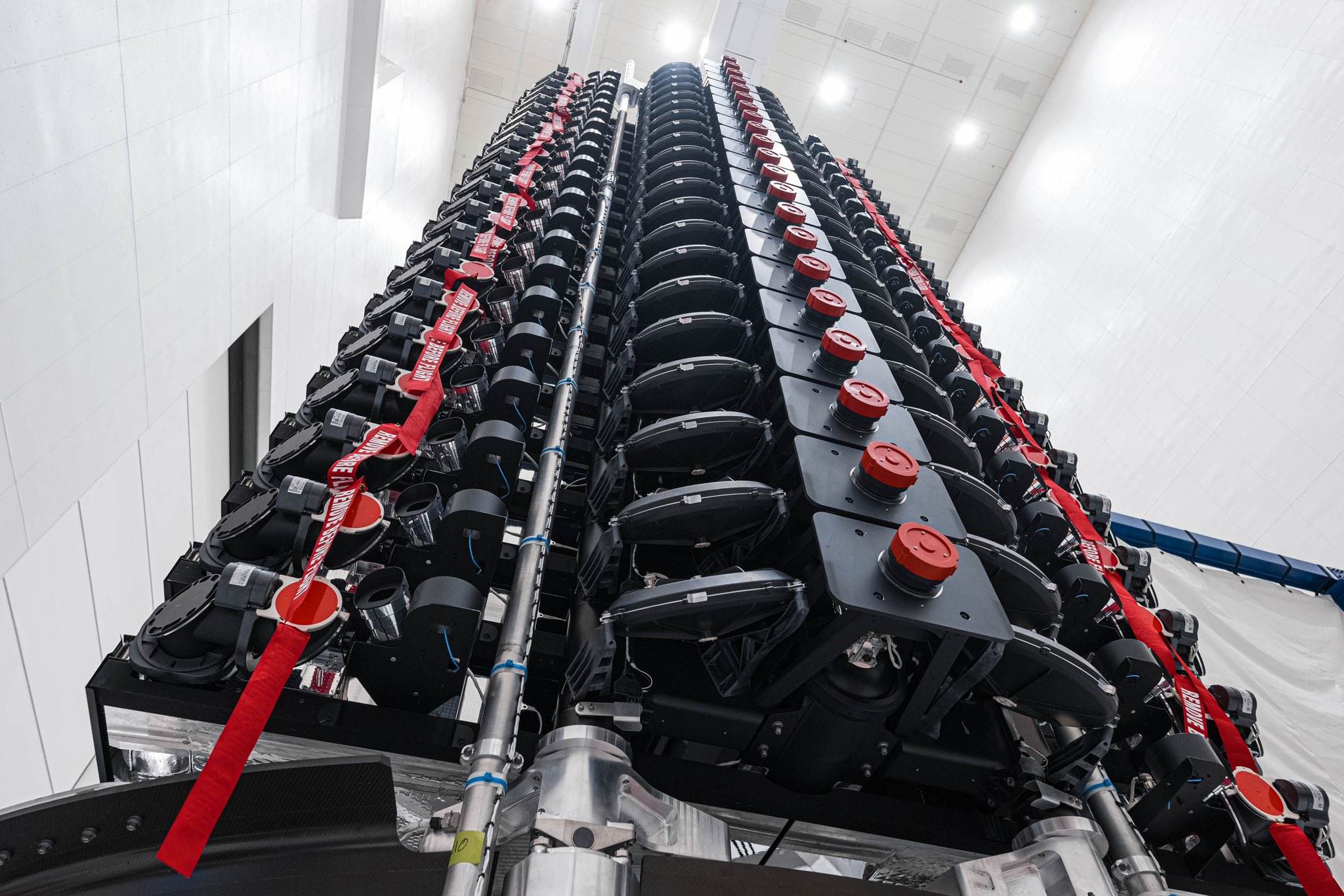
With B1082 joining the fleet tonight, the Hawthorne, Calif.-headquartered organization is gearing up to enter 2024 with five active, operational boosters at Vandenberg. And with its launch cadence so far across 2023 averaging a Vandenberg mission every 12 days—and completing its first three-launch month last April—another booster will undoubtedly furnish added capacity to increase that flight rate next year.
Aboard tonight’s flight will be a further 21 Starlinks, reaching 720 the number flown from Vandenberg in 2023 and passing 1,900 launched from the East and West Coasts on 61 Falcon 9 missions since January. About 62 minutes after launch, the Starlink payload, totaling around 37,000 pounds (16,800 kilograms), will be deployed, bringing to more than 5,000 the grand sum of these small, flat-packed satellites since May of 2019.
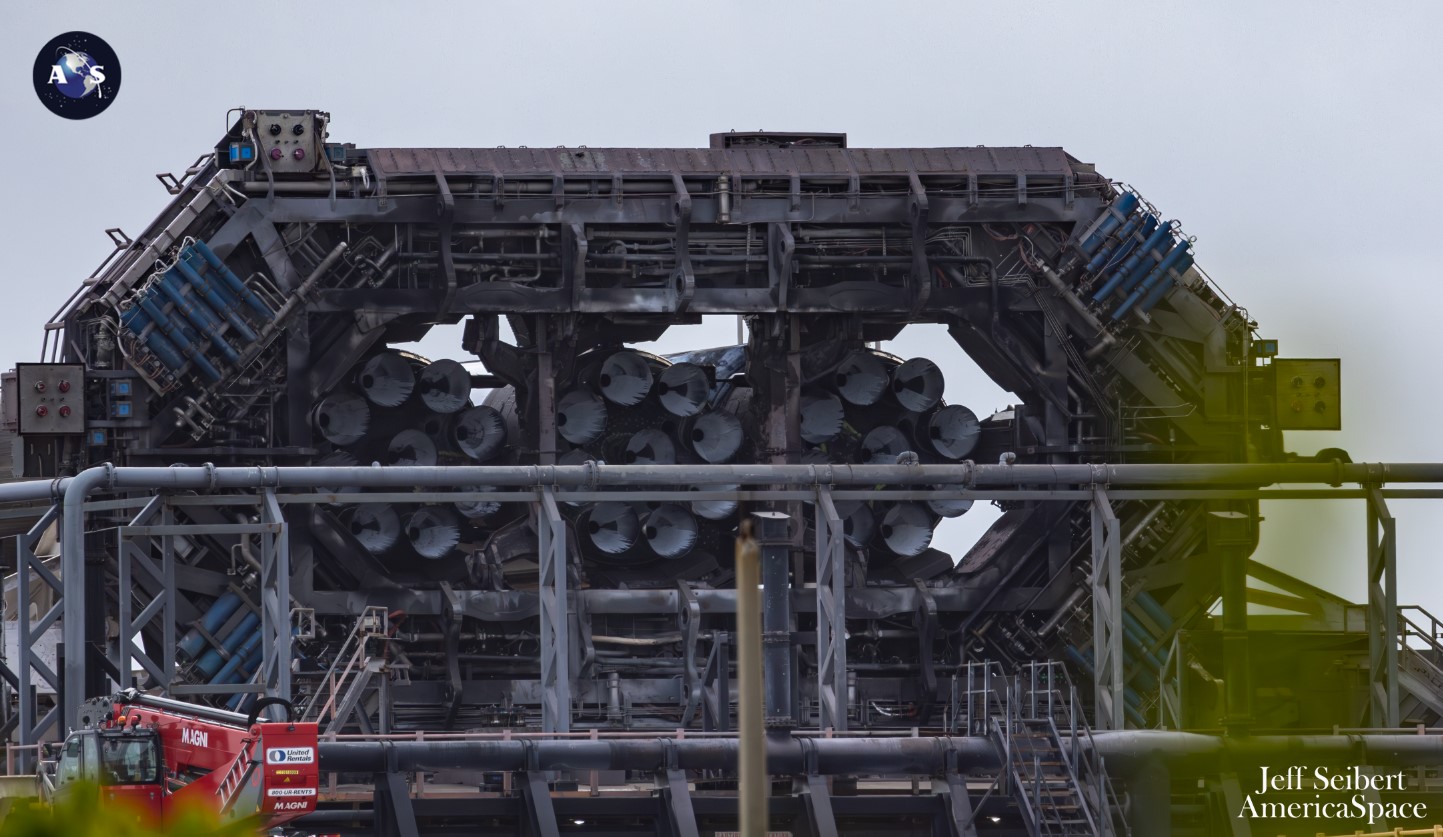
As a network, Starlink facilitates high-speed and low-latency internet provision to over 60 sovereign nations and international markets in North and South America, Europe, Asia, Oceania and Africa. Last month, Europe’s Georgia, Africa’s Benin, Asia’s Maldives and North America’s Costa Rica joined the network, with Honduras coming online last week.
The downsized Starlink “V2 Mini” satellites, first flown last February, boast three to four times greater “usable” bandwidth than earlier Starlink iterations. “V2 Minis include key technologies—such as more powerful phased-array antennas and the use of E-Band for backhaul—which will allow Starlink to provide 4x more capacity per satellite than earlier iterations,” SpaceX explained. “Among other enhancements, V2 Minis are equipped with new argon Hall thrusters for on-orbit maneuvering.”
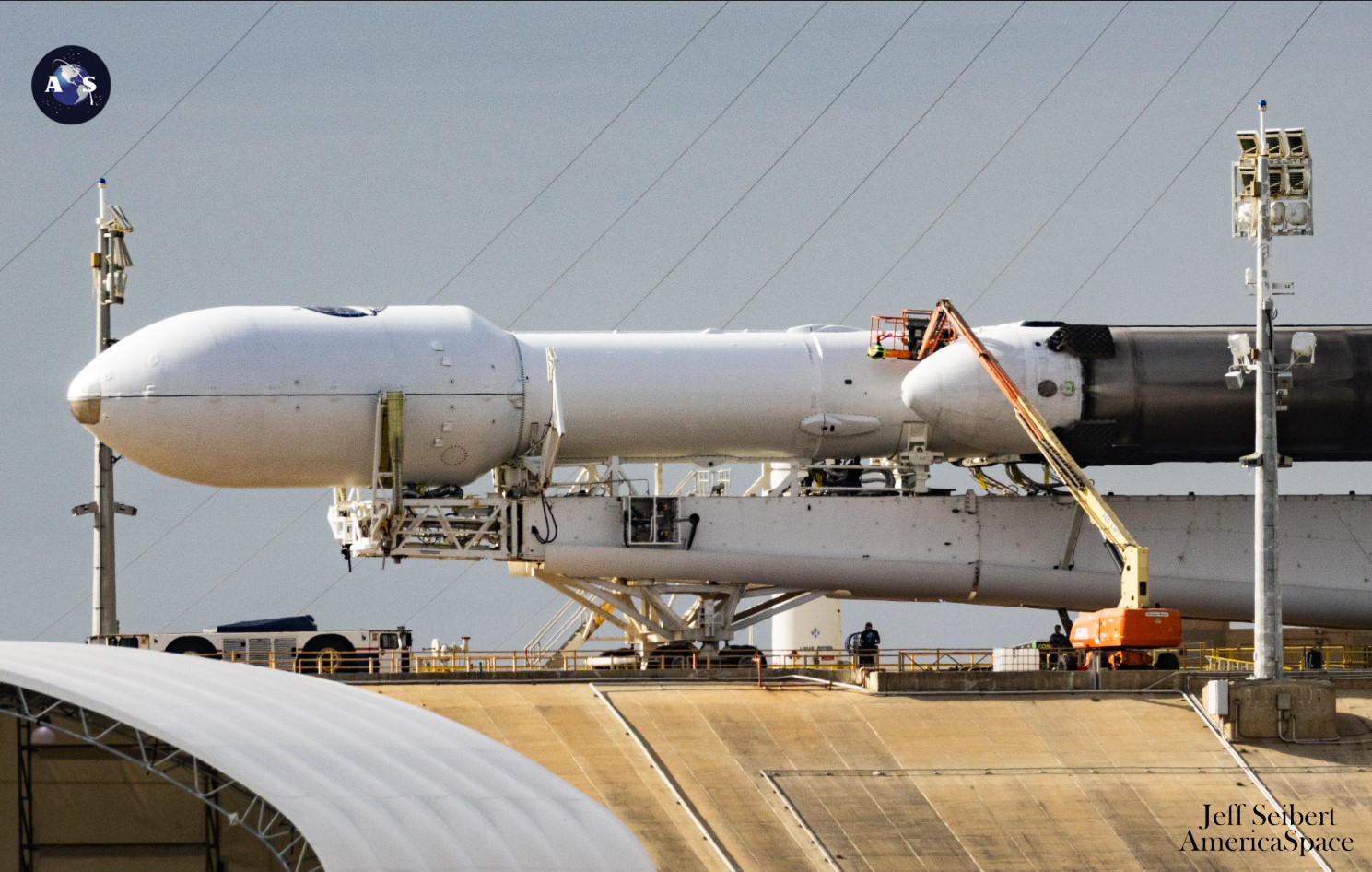
Florida-based intercity operator Brightline adopted Starlink on its trains earlier in 2023, the first passenger rail service in the world to do so. Additionally, El Salvador’s Ministry of Education has begun integrating Starlink capability into its schools to help close the digital divide between urban and remote rural communities and 50 Rwandan schools are now connected via Starlink’s high-speed internet service.
Among tonight’s haul of satellites are the first six “Direct to Cell” Starlinks, which reportedly boast capabilities to enable mobile network providers to offer “seamless global access to texting, calling and browsing” whether “on land, lakes or coastal waters”.
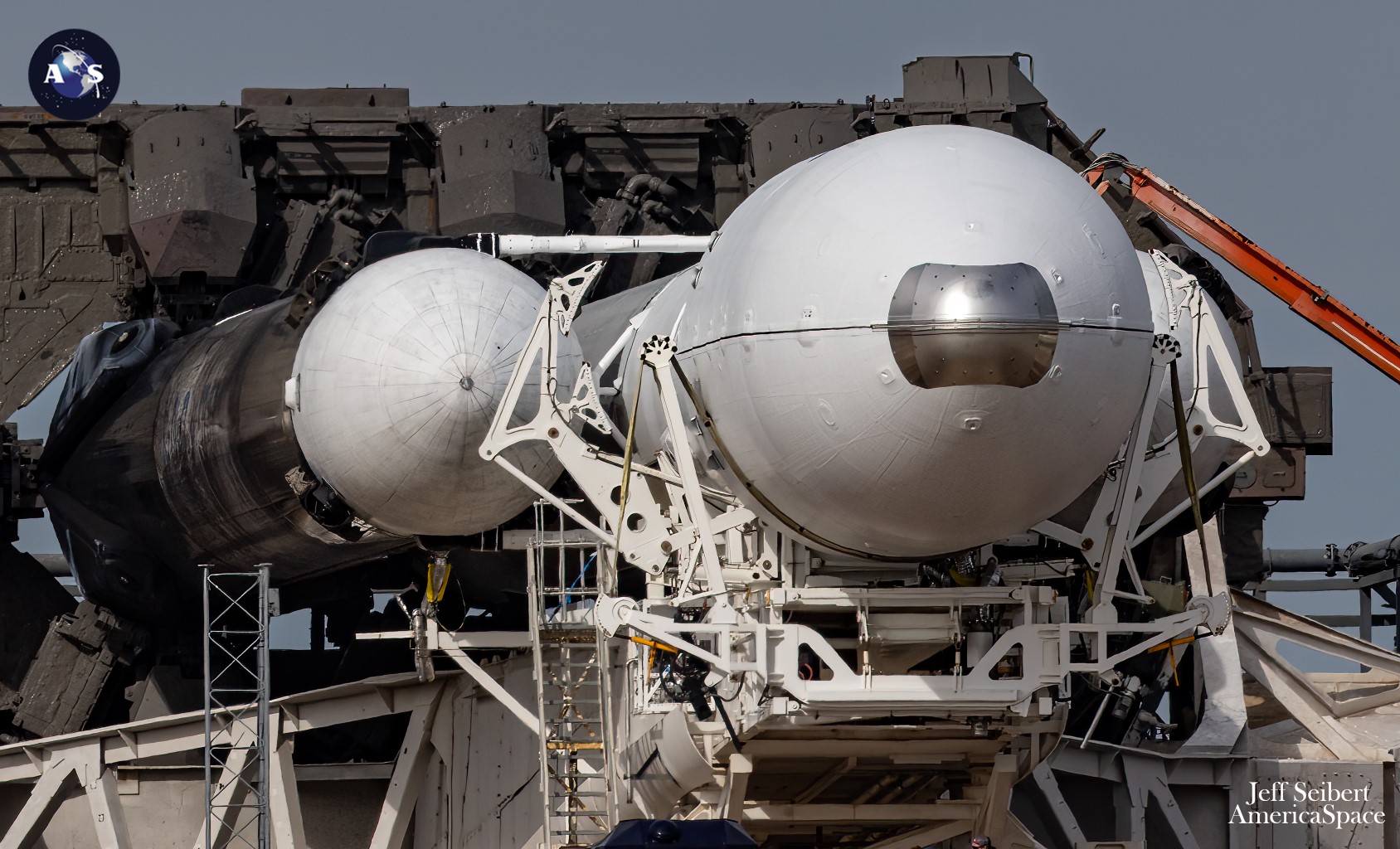
After wrapping up the first mission of an expected many-mission career, B1082 is set to land on the deck of the Autonomous Spaceport Drone Ship (ASDS), “Of Course I Still Love You”, situated about 400 miles (640 kilometers) offshore in the Pacific Ocean. The drone ship put to sea out of Port of Long Beach on Monday.
Tonight’s launch will break a week-long drought of launches as SpaceX eagerly heads toward its oft-stated goal of a hundred missions by the time the New Year’s Eve bell tolls. So far in 2023, it has flown 91 times—with 87 single-stick Falcon 9 missions and four outings by the Falcon Heavy—with another pair of boosters ready to go at Cape Canaveral Space Force Station and the Kennedy Space Center (KSC) in Florida.
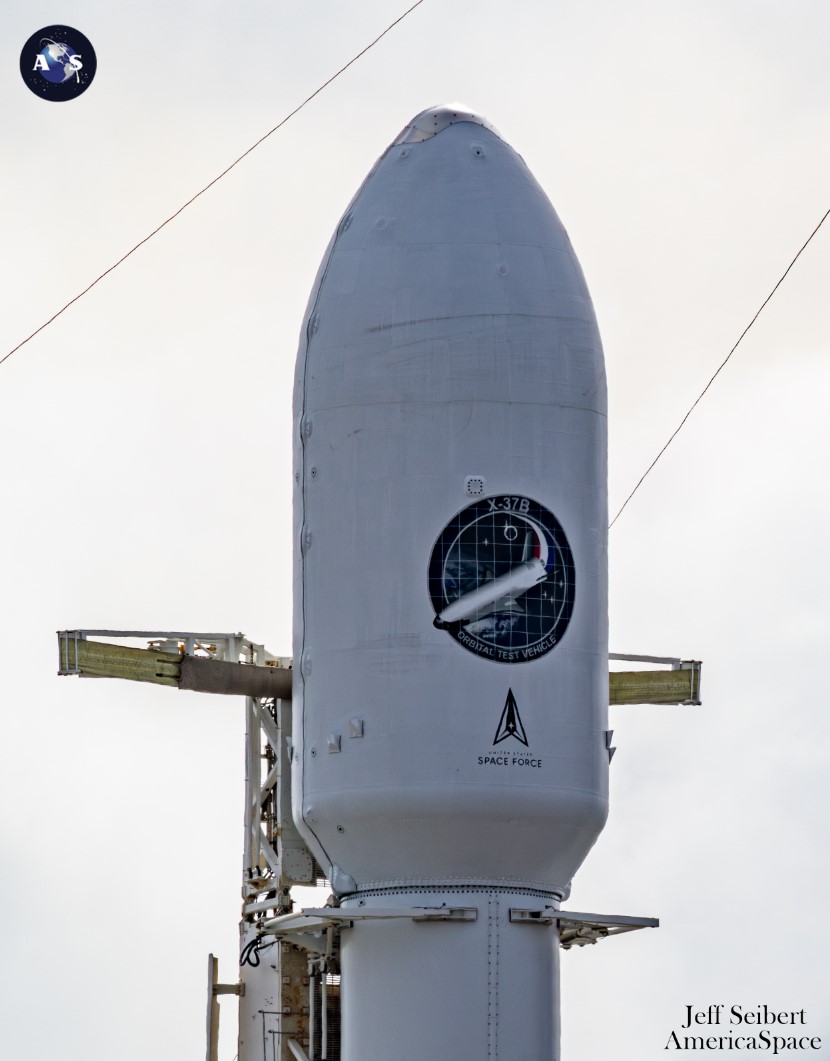
But those missions have met with significant delay in recent days, primarily triggered by far-from-ideal weather conditions. The Falcon 9 mission, with three-times-flown B1081 laden with 23 Starlinks, has already seen its launch scrubbed on 12 and 13 December, in the first instance due to high ground-level winds and on the second occasion in response to unfavorable recovery conditions in the Atlantic Ocean.
Similarly snakebitten was the year’s fifth outing by the triple-barreled Falcon Heavy, which will see a brand-new center core aided aloft by a pair of side-boosters with eight prior missions between them. Originally targeted to fly on 7 December, the launch moved to No Earlier Than (NET) 10 December, before a 40-percent-favorable weather picture forced a postponement to the 11th and an equally gloomy outlook pushed it to the 12th.
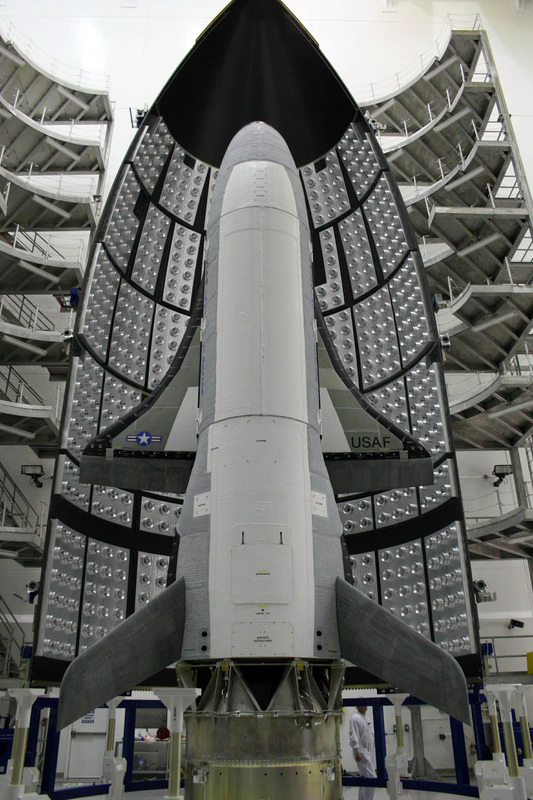
That launch attempt at 8:24 p.m. EST also came to nought when a ground-side technical issue arose, although SpaceX noted that both the booster and its USSF-52 payload for the U.S. Space Force—carrying the highly-classified X-37B mini-shuttle—remained healthy. Hopes to fly on 13 December also ended dismally as SpaceX opted to “perform additional system checkouts”, with no definitive new T-0 established: only a rather nebulous “Teams work toward the next best launch opportunity” appeared on X.
Launch services contracts worth $130 million for the USSF-52 mission, under its original, pre-Space Force guise as Air Force Space Command (AFSPC)-52, were awarded to SpaceX by the Air Force in June 2018. This was subsequently bilaterally modified by $19.2 million in August 2021, raising the total face-value contract to $149.2 million, as the launch date moved from an initial placeholder in fall 2020 to April 2022, a date which itself rapidly moved further to the right.
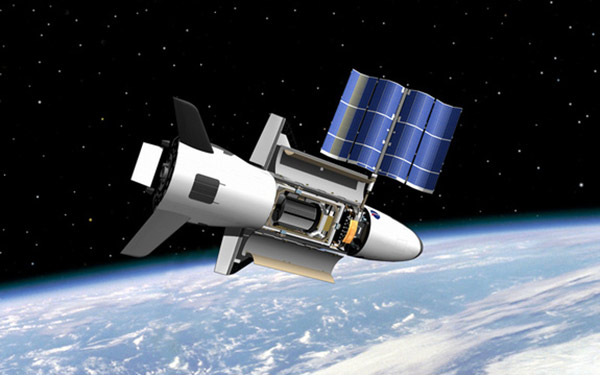
Last month, the Space Force announced the USSF-52 would be the seventh Orbital Test Vehicle (OTV) mission, using the second of two X-37B mini-shuttles. This particular vehicle has already flown three times and logged more than 1,966 cumulative days in orbit, becoming the first X-37B to land on the former Shuttle Landing Facility (SLF) at KSC in May 2017 and was first in the fleet to ride a Falcon 9 in September 2017.
In addition to activities which remain highly classified, this vehicle tested Aerojet Rocketdyne’s XR-5A Hall-effect thruster in furtherance of the Advanced Extremely High Frequency (AEHF) satellite constellation. It has also supported the Advanced Structurally Embedded Thermal Spreader-II (ASETS-II), which measured the performance of an oscillating heat pipe, and served as a testbed for a range of NASA experiments focused on the performance of materials in space.





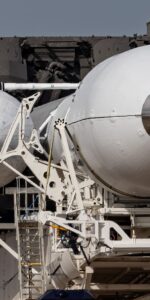
4 Comments
Leave a Reply4 Pings & Trackbacks
Pingback:After Weather Delays, SpaceX Heads for the Hundred in Year’s Closing Weeks - Shadownews
Pingback:Weather 40-Percent-Favorable for Tuesday’s Launch of PACE Mission to Monitor World Ocean Health - SPACERFIT
Pingback:SpaceX Launches Ambitious PACE Mission to Monitor Global Ocean, Atmospheric Health - AmericaSpace
Pingback:SpaceX Launches Transporter-10, Aims for Next Launch Under Two Hours Later - AmericaSpace